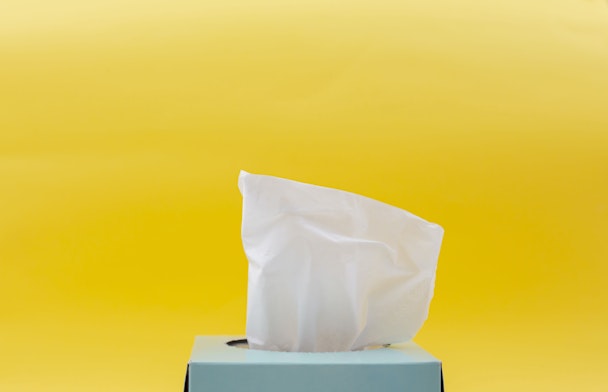Tissue sessions can help fend off cheaper rivals – just ask Crispin Porter + Bogusky
Focusing on face-to-face pitching has been central to CP+B’s recent upturn in fortunes, according to North America president Maggie Malek.

Tissue sessions can be time-intensive, but can save agency cash in the long-term / Unsplash
It’s important to check in every now and then. The same goes for pitching for new business. In longer reviews, clients may stage ‘tissue sessions’ – midway checkpoints staged after the pack of competing agencies has been whittled down to three or four options and an initial brief has been handed out.
They provide agencies with an important opportunity to test the waters with some initial thoughts and for clients to give constructive feedback on early-stage proposals. And they provide both parties with a simulation of what their working relationship might end up looking like.
They’re not for everyone. Smaller companies with tighter budgets might not want to spend so much time evaluating potential agencies and some brands make their pick at the chemistry stage, cutting the entire endeavor right down.
Maggie Malek, the North America president of Crispin Porter + Bogusky, says “the intention of a tissue session is that you meet with a client and you’re able to provide some green shoots and ideas.”
Advertisement
Face-to-face pitching stages such as tissue meetings and chemistry sessions are more common in reviews for integrated accounts; when there’s more cash at stake, it makes sense to take your time. That’s exactly the kind of client that Crispin Porter + Bogusky is gunning for, explains Malek.
“People are still coming to CP+B for creative-only pitches, media-only pitches, influencer-only pitches. But we’re looking for big integrated accounts – accounts that we can do media, creative, data analytics and optimization on all together.”
CP+B has had a tough couple of years. The company was close to being shuttered by parent firm Stagewell, Adweek reported earlier in August, following poor commercial performance and several client departures. But after a rebrand and merger with four Stagwell sister agencies, the agency has turned around its account win rate. In the past year it has brought onboard new clients including Dropbox, Old Dominion Freight Line, Plackers and Nasonex.
Malek says that it has had particular success zeroing in on customers willing to make the time to think harder about their marketing needs. “Where Crispin is investing most of our business development energy is on clients that want to have a chemistry and a tissue session.” Clients that have reviews led primarily by procurement and cost concerns and don’t want to make the time for that kind of discussion are less likely to forge productive long-term pairings, she says.
“Creative is so subjective. If there’s no chem, no tissue, no getting-to-know-you, and they make a decision based on a final deck? They’re not able to see the way we think.”
Advertisement
Because the agency has been transitioning its offer from a largely creative one to a more rounded set of services, Malek says that elements such as tissue sessions have become particularly important. The more time it has in the room with clients, the better it can state its case. “That’s our chance to show off our integrated capabilities,” she says.
As an example, she cites an ongoing review the agency is in competition for. “Right now, we’re in a $7m pitch for a major car company. One of the challenges it brought to us in the brief was that its creative and media agencies were not talking to each other. So in that tissue session, we were able to show them how we’ve taken data from our own audience sources and used media to inform our creative.
“Then we show it 10 or 15 ideas, very green shoots, to see which ones it has a good reaction to. It might steer us away from an idea… and that gives us the right information, the right relationship going into the final meeting to present ideas that we feel really good about.”
Suggested newsletters for you
In Malek’s experience, the sessions usually take less time than a chemistry meeting. One recent session took 90 minutes, she says. ”We like to have more opportunities to get to know clients, especially in this hybrid world.”
Though Malek emphasizes the benefits, tissue sessions do draw a review out. As such, they’ll cost agencies more in billable hours.
“You can’t calculate exactly how long a good idea is going to take. It could be something that took a creative five minutes or two weeks,” she concedes. However, the additional chance for a client steer can potentially save the agency cash because it increases the chances of overall success. “If we go into that final meeting with three ideas we think are beautiful, but none of them land… that is a huge waste of time. We would rather invest the time in having the tissue session earlier on than going straight to pitch.”
In some cases, a tissue session has been enough to win business outright for CP+B, says Malek. “They’ve been so excited about the work that we did not even go into the final RFP.”
It has also helped the business hold its ground against undercutting – and pull victory from the jaws of defeat. “We had really great chemistry sessions and tissue sessions with a client back in January. And we got second place.
“It came down to price. And nine months later, the client came back to us because it had loved the relationship and it had ended up not being happier with the cheaper agency. Our prices stayed the same and it is now going to work with us.”

